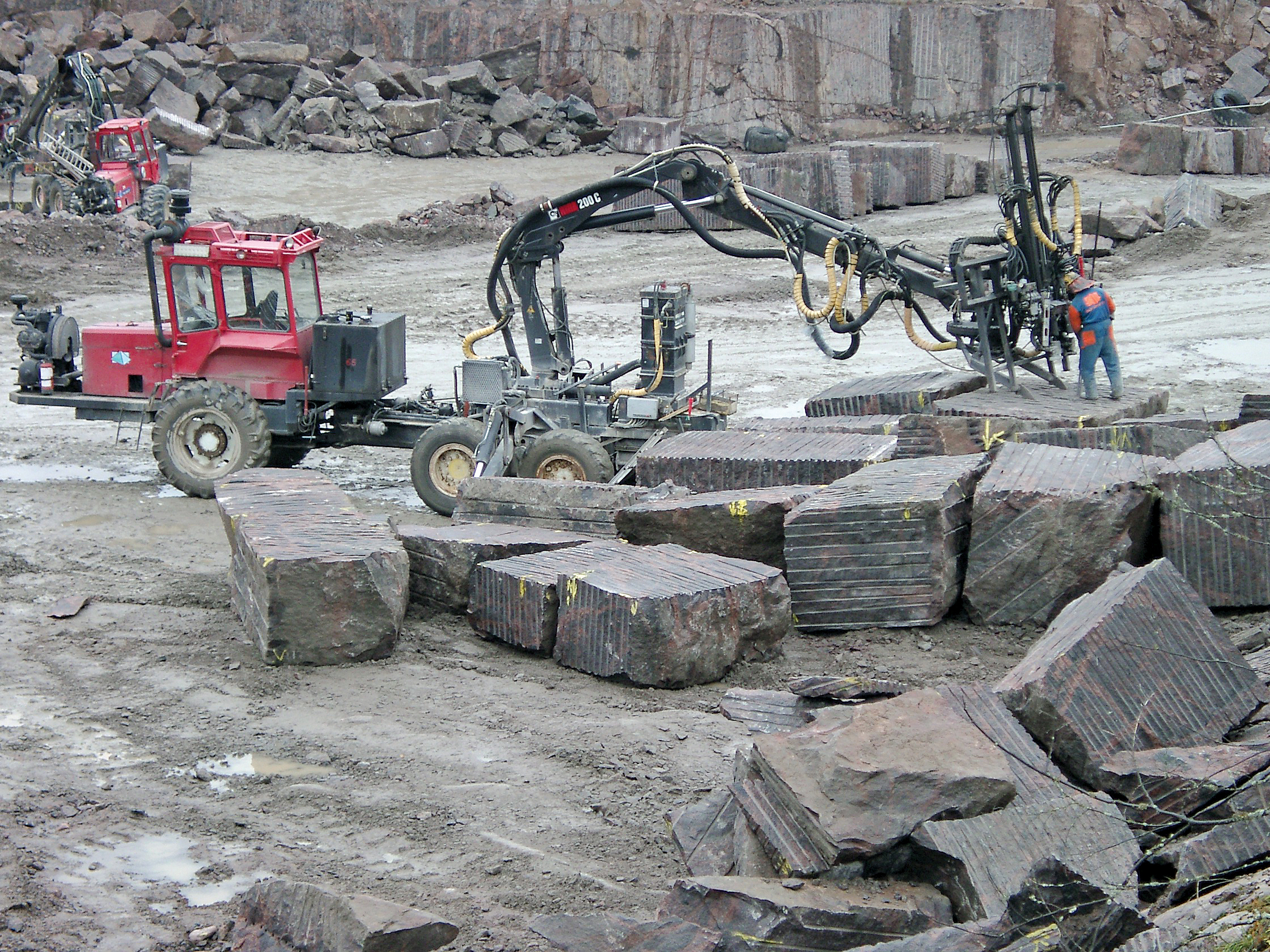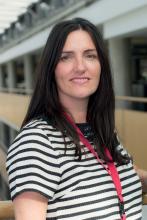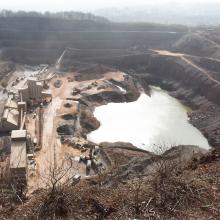
The Finnish Natural Stone Industry Association is leading an international project for the promotion of safety in natural stone quarries. The project, co-funded by the European Commission through Lifelong Learning Programme Leonardo Da Vinci, counts on the involvement of Finland, Spain, Germany and Croatia.
The project, Safequ-3D Animations for Promoting Safety and Health in Natural Stone Quarries, aims to boost healthy and safe workplaces in natural stone quarries by means of good practices.
According to the project organisers, the project is necessary because of the high accident rate that the natural stone industry has traditionally suffered, as well as derived professional illness such as silicosis.
“Nowadays, the control of occupational hazards is a major challenge for the stone industry,” say the project promoters.
The Safequ project arises from the need for new tools and didactical materials for the promotion of safety and the increase of awareness of employers and employees about this issue.
To reach it, during the project, 3D animations are being developed. These animations show the main risk situations in the performance of tasks at natural stones quarries.
“The pedagogical approach is easy and clear to understand and funny to gain the audience’s attention,” says Safequ.
The animations are similar to the results of the previous project Stone Safety (2009-2012) that can be consulted at www.stonesafety.eu and are an application of the Napo technique (%$Linker:
“On the film, the action takes place without verbal or written communication, with information being given in a visual way.
“This dynamic enhances the pedagogical advantages mentioned above as well as the international dissemination of the animations regardless of the mother tongue of the audience,” says Safequ (%$Linker:
Safequ partners, apart from the Finnish Natural Stone Industry Association, include Marble and Natural Stone Technology Center, Spain; Faculty of Applied Sciences of Saimaa University, Finland; Friedrich-Weinbrenner-Gewerbeschule Institut, Germany, and Klesarska Skola, Croatia.
3D animations
The project started late last year and will run for two years.
“Within this time a deep analysis of the safety and health issues in natural stone quarries will be carried out, as well as the 3D animations regarding the main needs arising and the pedagogical methodology agreed by the consortium.
“Subsequently, a plan for the exploitation and dissemination of the project’s results will be developed and performed with the aim of benefiting all stone quarries’ industries in Europe with Safequ’s outcomes.”
Safequ says that apart from the main aim of the project to promote the use of risk prevention measures in natural stone quarries through the production of innovative training material based on the 3D animations, there are other specific objectives.
These are to research the main risk situations during the processes of quarrying the stone in the countries represented in the project; to define the key situations for the multimedia materials’ production, and to produce an ICT-based learning tool and enable awareness arising in the risks prevention field from a practical-orientated approach.
Products from the project will include a compilation of European and country-specific regulations relative to safety at work and risk prevention in the natural stone quarrying sector and a report related to the stone quarrying sector.
This will include the situations with the highest risk of accident or injury and professional illness; the current situation of the companies in relation to the use of individual and collective safety equipment; a multimedia learning tool for training and raising workers’ awareness of the importance of risk prevention (this tool will include ten sketches of 90 seconds each), and a website for the project and its products.
A report, the Results of the Analysis of the Survey of Risks and Prevention Measures in Quarries, was produced in April, 2013. The present report shows the average results obtained in Germany, Finland, Spain and Croatia based on 45 surveys made in quarries belonging to companies in these countries.
The surveys taken were from Finland (8), Spain (17), Germany (10) and Croatia (10).
The survey was intended to determine the level of risk in the workplaces that are the scope of this project and the degree of implementation of preventive measures to eliminate or control the risk to tolerable levels.
In the survey, companies were encouraged to provide information about the occurrence of 25 previously identified risks.
In addition to these risks, prevention measures were assessed in a quantifiable manner (based on a numeric value) regarding the level of implementation in the workplace, using 1 for the lowest score (little or no implementation of measures); 2 for an average (medium set) and 3 for a higher score (always or almost always).
The methodology for the collection of data was to visit the facilities of companies such as factories, quarries and offices while in other cases, mails and faxes have been sent.
“Afterwards companies sent back their responses, giving their support to the partners of this project,” says Safequ.
“Regarding the variables studied in the study, the following points were taken into account: safety risks such as falls or electrocutions, usually manifesting in the form of accidents; risks related to industrial hygiene such as exposure to noise or dust, which manifest themselves in the form of diseases and related risk, and finally, ergonomic and psychosocial factors, these risks being a potential source of danger to generate mainly dissatisfaction and work-related diseases.
“Based on the previous classifications (occupational safety, industrial hygiene, ergonomics and social psychology) and by reviewing collected data, we can set out some conclusions that are being considered for realisation, in the summary table and statistical analysis.”
Looking at the analysis of risks, data collected shows that in general terms, there is “a fairly acceptable” level of implementation of measures, because average values are rarely there below 2 points.
“Regarding safety risks (not professional diseases) we observe the need for introducing measures which can be easily implemented, in some cases. There are low values for aspects such as objects obstructing passing areas and protection against flying objects.
State of the industry
“Regarding the hygienic risk of dust as a chemical agent, it is necessary to establish effective, collective prevention measures such as the aspiration of dust or injection of water, therefore emphasising the control of risks over the deterioration of working conditions.”
The report says that regarding ergonomic, societal and psychosocial conditions, it is necessary to mention the risks arising from the lack of rotation of tasks.
“Nevertheless, it is assumed that in workplaces with few workers the implementation of these changes in the organisation of work is not easily applicable.”
In conclusion, the report says that as the aims of the survey are to obtain a “state of the industry,” which considers existing risks and to develop a series of animations, various proposals have been made. The proposals include animations dealing with industrial safety such as a lack of order and cleanliness in the workplace, causing workers to fall, crash into immobile objects and tread on objects and to portray the risk of falls to different levels (from heights) near quarry faces.
“Likewise, it would be important to highlight the risk of falls from blocks to be drilled (by hand or with drilling machines).”
Also highlighted will be cuts and bruises to workers doing machine maintenance, such as checking, lubrication or substitution of elements.
“In spite of not being a big risk, it should be taken into consideration because of the frequency with which this happens,” says Safequ.
“Flying particles and objects must be taken into consideration. Tasks such as cutting and drilling cause risks that must be minimised.
“As in the case of falling from heights, the risk of being run over by mining machinery is not common but the consequences are extremely dangerous and may even result in the death of the worker.
“It is important to consider the risk which arises from inclement weather, both for northern regions (for example coldness or slipping on ice) and southern regions (dehydration and heat stroke).
Proposals have also been put forward for animations dealing with industrial hygiene (dust, noise and “regarding the values obtained in questionnaires, vibration must be taken into account”).
The proposal for animations dealing with ergonomics and psychology would look at activities such as persistent forced postures (standing and seated) over a long period of time, which may cause health disorders for the worker, and workload, worries and bad nutrition, which could cause psychological harm.
“Doing exercise, good nutrition, respecting programmed schedules, as well as a pleasant working environment are aspects worth showing in the animations,” says Safequ.






